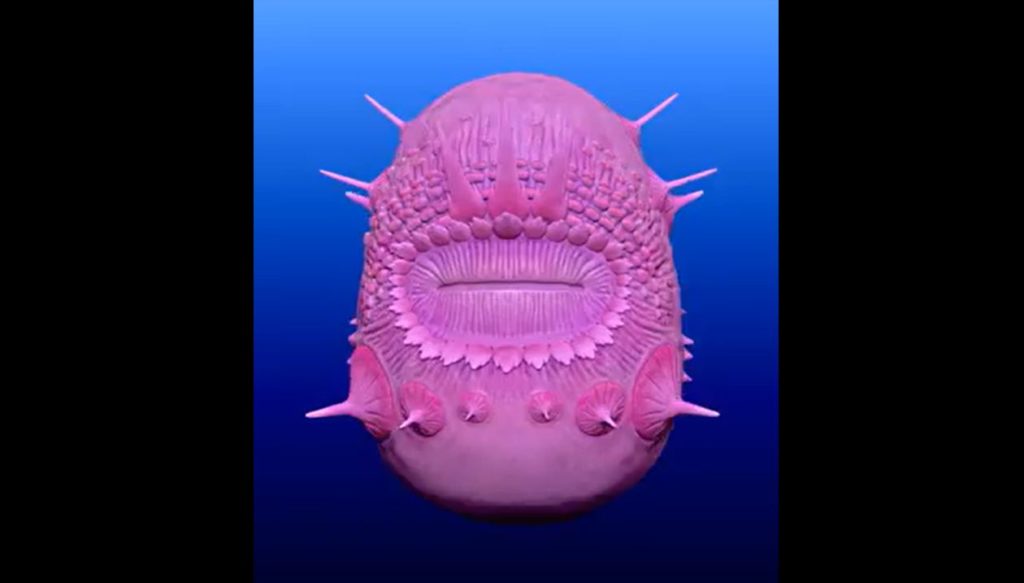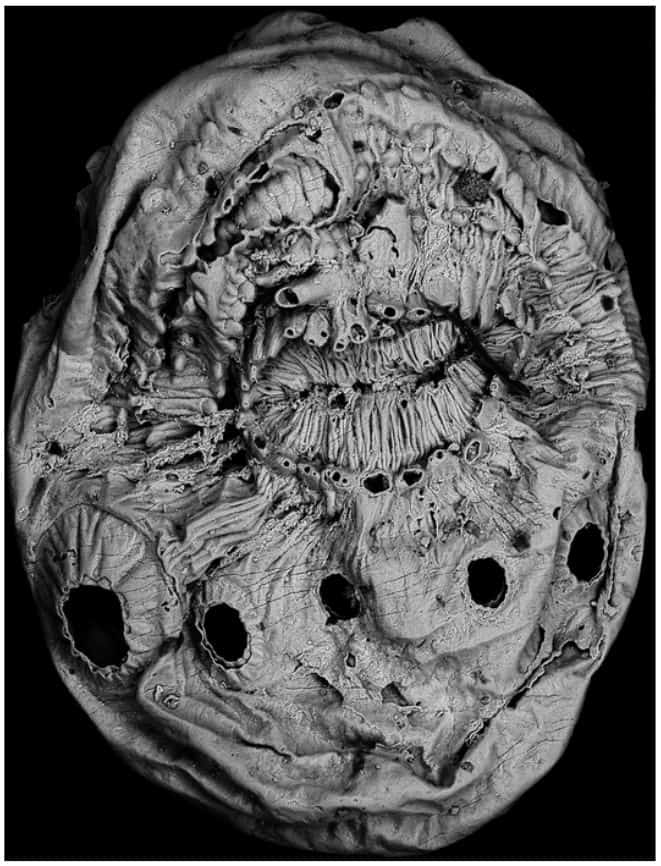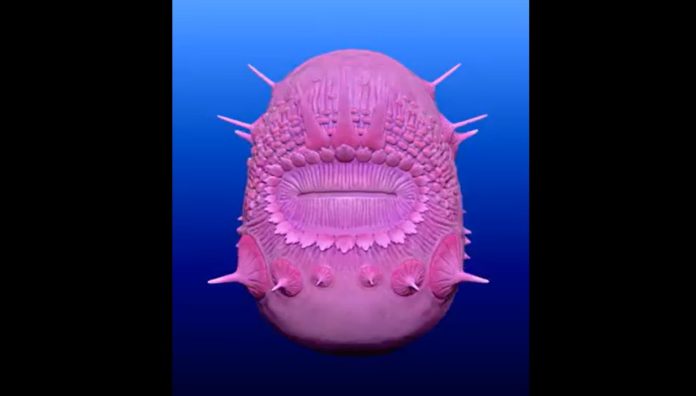For paleobiologists, it’s one step forward and one step back.
A large, international team led by Shuhai Xiao, a paleobiologist with the Department of Geosciences in the Virginia Tech College of Science, is examining Saccorhytus, a roughly 535 million-year-old microfossil found in rocks in China by two scientists who were each formerly visiting professors in Xiao’s lab.
The new discovery: Saccorhytus is a protostome, or an animal with a primary mouth, rather than a deuterostome, or an animal with a secondary mouth (humans are part of this evolutionary branch, in case you’re wondering).
The majority of animals are bilaterally symmetrical. They have two sides: left and right. Protostomes and deuterostomes are two separate groups that make up these animals. The latter includes all vertebrate animals, including humans. Examples of the former include bugs, crabs, and clams.
“We are back to square one in the search for the earliest animal with a secondary mouth,” says Xiao. “The next oldest deuterostome fossil is nearly 20 million years younger.”
Researchers from Chang’an University, the Nanjing Institute of Geology and Palaeontology (NIGPAS), the Chinese Academy of Geological Sciences, the First Institute of Oceanography of the Chinese Ministry of Natural Resources, Shandong University of Science and Technology, Freie Universität Berlin, and England’s University of Bristol, as well as Switzer, published the findings today in Nature.
Protostomes and deuterostomes most likely split apart no later than 550 million years ago, according to Xiao.
Although secondary-mouthers’ convincing remains are only thought to be 515 million years old, primary-mouthers have a fossil record that dates back 550 million years.
“This means that there is a large gap in the fossil record of deuterostomes, or our side of the animal tree. So we will continue our digging and searching for the real first deuterostome fossils.”
The Saccorhytus microfossils were found in 2012 in China by scientist Yunhuan Liu, who is now at Chang’an University. Later, in collaboration with Huaqiao Zhang, who is currently at NIGPAS, more material was retrieved.
Liu and Zhang were both visiting scientists at Xiao’s lab in Derring Hall when they started studying Saccorhytus, which looks like a spikey, wrinkled sack with a mouth surrounded by spines and holes that another research group thought were gill pores – a primitive trait of deuterostomes, Xiao said.
The research team recently dug for additional Saccorhytus specimens with researchers from China, Germany, and the United Kingdom and came up big. Once thought to be rare, the team discovered hundreds of specimens, many of which were far better preserved than any previously discovered, according to Xiao. This revealed new information about the anatomy and evolutionary relationships of Saccorhytus.
They used a vinegar solution to break down tons of boulders that were trapping the critters inside, and then they picked through the sand to find the species that had been left behind. Intense X-rays were then utilized to illuminate the fossils at the Swiss Light Source particle accelerator in order to produce detailed photographs.
A supercomputer was used to build 3D digital models from hundreds of these slightly different-angle X-ray photos, revealing the minute details of Saccorhytus’ internal and external architecture.

A man with a beard and a huge white hat can be seen looking into the camera on his own cell phone.
“Some of the fossils are so perfectly preserved that they look almost alive. Saccorhytus was a curious beast, with a mouth but no anus and rings of complex spines around its mouth,” Liu remarks.
Zhang adds, “The digital models showed that pores once interpreted as gills are actually broken spines, striking down the only piece of evidence in support of a deuterostome interpretation.”

What exactly is Saccorhytus if it is not a deuterostome?
“We considered lots of alternative groups that Saccorhytus might be related to, including the corals, anemones, and jellyfish, which also have a mouth but no anus. Our comprehensive analysis led to a relationship with the arthropods and their kin, the group to which insects, crabs, and roundworms belong,” adds Philip Donoghue, a co-author from the University of Bristol.
As Xiao puts it, this is surprising “because the arthropod group has a through-gut, extending from mouth to anus.”
“Saccorhytus’s membership of the group indicates that it has regressed in evolutionary terms, dispensing with the anus its ancestors would have inherited,” he adds.
There is still a lot to learn. Possibly even more than what has already been found. Michael Steiner, a co-author from Shandong University of Science and Technology and Freie Universität Berlin, asked how Saccorhytus would have lived: “floating in the sea or living among sand grains?”
Also, did the microscopic creatures’ spines scare off predators or keep them from moving around on the sea floor? The answer might be both.
Xiao and his colleagues are looking for answers.
Image Credit: Shuhai Xiao
You were reading: Researchers Reveal Surprising Secrets Of One Of Our Oldest Ancestors
